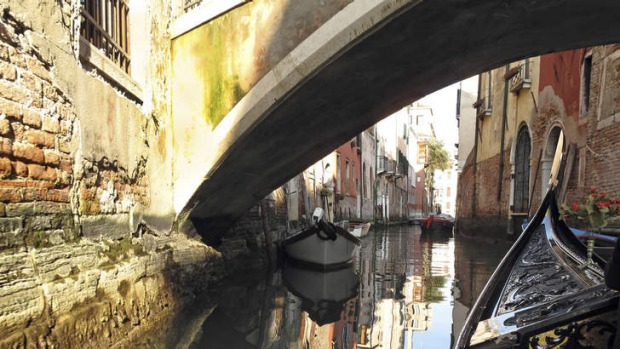
In our second annual literary special, compiled by Kay O'Sullivan, Traveller asked five leading Australian novelists to write about the one place that has most informed and inspired their prose.
ISLE OF WIGHT
The 2014 Miles Franklin winner Evie Wyld loves islands, especially, the Isle of Wight. Here she explains why.
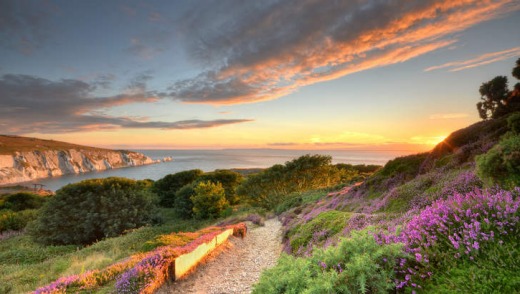
There's something magical about islands. The smaller the better. I have spent a lot of time on the Isle of Wight. So when I came to write a novel about an Australian living in exile on a British island, it was that landscape that I drew on.
The Isle of Wight is a diamond-shaped fragment broken off from the south coast of England that has drifted five miles away.
Less than 400 kilometres square, you can drive between its furthest points in less than an hour, and there is something about the tiny distances involved that give it the air of the miniature, the model, the toy. You can see why Julian Barnes chose it as the setting for a one-third replica of England in his novel England, England.
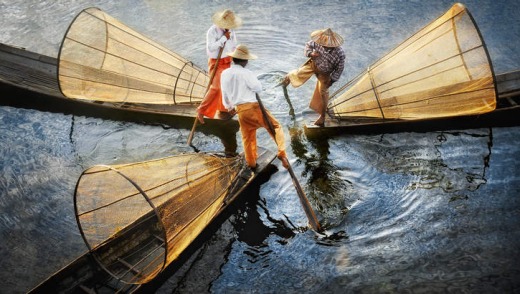
You begin to get this sense from the places frantically advertised on the half-hour ferry crossing over - a couple holding hands at The Owl and Monkey Haven, a family teaching their toddler to make garlic bread at the Garlic Farm, people bouncing up and down at a music festival, pointing at a yacht, laughing at a steam engine.
The buckets and spades, and ornaments with shells glued to them, the countless possible Sunday lunches, cream teas and ice-creams; the newly minted national dish of crab on chips.
The good places for the elderly, the good places for the young.
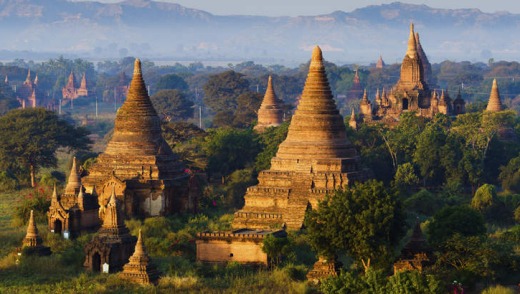
The reptile house, the spinning teacups; hold a hawk, pat a donkey, watch the tiny sharks in the tiny aquarium. Fill a test tube with coloured sand and seal it with wax for perpetuity.
We may be small, they seem to be saying, but there is so much to do. It is as if England has poured one aspect of its culture into a smaller vessel and it is spilling back out over the sides.
But there is another side to the island: older, darker, slower that is less visible to the visitor but most important to me.
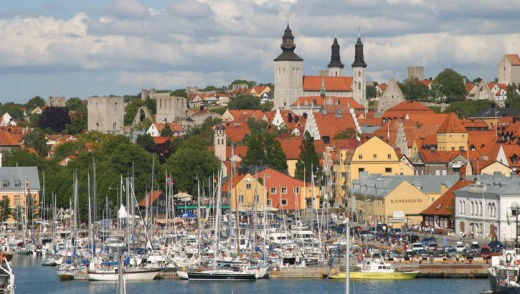
You get a sense of it around the edges of things, off-season.
You might get it after-hours at the fun fair in Alum Bay, with its steep steps down the cliff face to the stone beach, and its chairlift that you can sit on once it has stopped running if no one is about, and watch the sun set behind the three tall stacks of chalk that rise out of the sea on the western tip of the island that are known as The Needles.
You feel it in the centre, a wooded landscape of beech trees and elderflower, blackthorn blown horizontal on the downs.
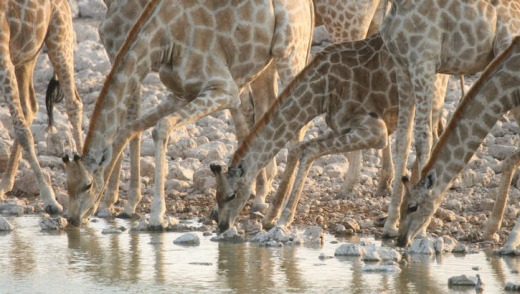
The earth is chalky and pressed with rabbit holes and hoof trails. Tufts of fur and feathers here and there prove the existence of foxes and unlike London this is all you ever see of them.
When I was a kid there was rumoured to be an escaped puma on the island. I obsessed over it, attributing every dead lamb in the field next door to the big cat.
I dressed as the puma and romped about in the woods on my own, collecting sticks and plants, building burrows and talking to myself. I became convinced I could shape-shift and when other people's children came to stay I was unfriendly, territorial.
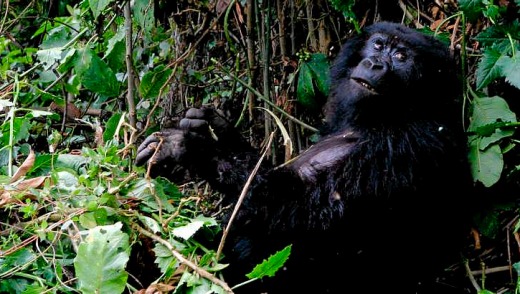
I tried to imply through a cool look, that if I wanted to, I could change into a puma and tear out their throats.
We stayed in caravans on the island back then, and we'd go walking with the dogs at dusk, when the rest of the island was at home. Up on Mottistone Down, the fog would roll in even in summer, and you'd see only a few feet in front of you, but you'd hear the dogs galloping like horses around you, chasing hares.
In autumn, on the north-west facing side of the down, we'd collect parasol mushrooms, huge, foot-tall things, that my mother would cook at home, their inky gills turning everything in the pan black.
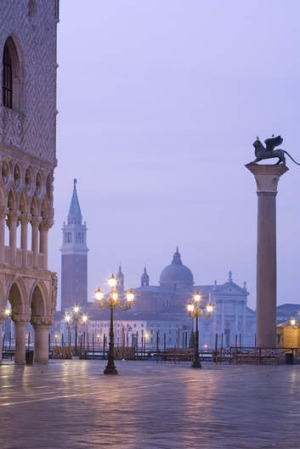
And giant puffballs, the size of dogs, which you'd slice like a loaf of bread, and dip in egg and breadcrumbs and then fry.
We picked stinging nettles and blackberries to make pies. We took the dogs lamping, but always when they caught the rabbit, they'd evade us, hiding in the gorse while they ate, leg bones cracking in the darkness.
It's no surprise that Alfred, Lord Tennyson made his home here.
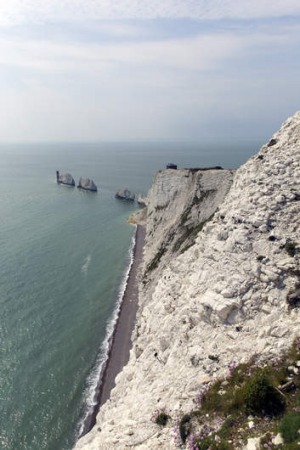
The Tennyson Trail is a 24-kilometre walk running from Carisbrooke Castle in the centre to the Needles in the west. It takes half a day if you're fit, a day if you've got children trailing with you, or if you stop and eat a picnic or pick blackberries, help a sheep out of a barbed-wire fence or shelter in a wood while it rains torrentially.
It can be slow going if the wind tries to blow you off the cliff at Tennyson's Cross. As you jump straight up in the air, see how far it will carry you. North-west of the capital, Newport, is Parkhurst Forest, a mix of ancient woodland, relic heathland and plantation woodland. It's a haven for wildlife, including the red squirrel, the garden warbler, the nightjar, the woodcock, the green and the great spotted woodpecker and the long-eared owl.
If you walk into the pine forest, off the trail, you'll lose the daylight, and in here, if you go in deep, you can find wild mushrooms - chanterelles, hedgehog mushrooms, chicken of the woods.
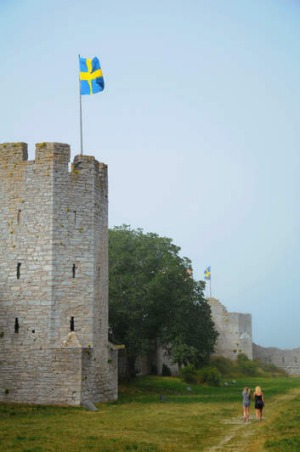
You'll also be unsettled occasionally by small one-man bivouacs, made from sticks and moss that remind you that Parkhurst Prison, which once housed the Yorkshire Ripper, and Ian Brady, one half of the Moors Murderers, backs onto the forest. Before its downgrading in the 1990s, it held some of the country's most troublesome prisoners.
The reason for its downgrade was an escape made by two murderers and a blackmailer, who lived rough for four days, trying to steal an airplane.
It is something sad and old and a little bit cruel, the loneliness of islands. It is something that makes you appreciate the edges of things and the centre of things.
It is the place I grew up, where I got married, the place we scattered my father's ashes and where my brother and I will take our children. I don't imagine my life without it.
Born in England and raised in Australia, London-based Evie Wyld was the surprise winner of Australia's most prestigious literary prize, the 2014 Miles Franklin Award for her second novel, All the Birds, Singing, a dark, compelling tale of a female shearer.
VENICE
The 2008 Miles Franklin Award winner, Steven Carroll, has a warning: traveller beware; once glimpsed, Venice will seep into your bones forever.
After an all-day train journey from Rome we crossed the Freedom Bridge and into Venice in the late afternoon, stepped out of the station and came face to face with the Grand Canal in all its cluttered glory for the first time.
Nothing prepares you for that first sight. And you could use words such as "breath-taking", but the initial response is more like incredulity. It exists.
For that first sight of Venice is essentially a convergence of myth and reality, and the reality doesn't let you down. That was in 1988 when my partner and I stayed in the Australia Council's Venice studio for six weeks. Five minutes after we settled in we were drinking prosecco in a small bar in San Stae watching an elderly woman lug her shopping bags home.
Suddenly she dropped her bags in front of us, squatted on the footpath, urinated on the spot, then picked up her bags and continued on her way leaving a yellow rivulet to drain into a small canal.
Rats, the most complacent cats in Europe, magnificently crumbling palazzos, fetid canals with a briny stink all their own - D. H. Lawrence's "green and slippery city" is also home to the most immaculately clothed men and women on earth, some of the most impressive restaurants and hotels that were once the homes of Venetian aristocracy.
The grit and the glory - and Venice's glory, I suspect, was always of the fading variety - existing side by side. Informing each other and complementing each other. But it's also a working city as well as a vast, open-air museum.
Pizza houses breathe the everyday smells of pastry and tomato sauce into the salty air, washing hangs from lines strung across balconies, and vaporettos (little steamers) repeat their rounds from the station to the public gardens with, more or less, the same regularity as the local bus service.
Everyone, to an extent, makes a place their own simply by being there and doing things that, in time, become memories.
And the more you return to a place the more layered the memories become. I have returned many times, and each visit has become another chapter to "my" Venice.
Squares, various flats I've rented, bridges and cafes all become reference points. To face the Basin of St Mark looking out towards Giudecca is to remember spending the Feast of the Redentore (celebrating the end of the plague) on a boat with friends.
Every year a temporary bridge connects the Fondamenta delle Zattere to Giudecca and you can walk from one to the other.
Things got out of hand that night, and, at some stage, I found myself standing in the middle of a full-scale brawl between revellers and police: punches being thrown everywhere, fortunately none of them connecting. We fled the scene, speeding along the nearest canal, dodging on-coming craft in the dark, convinced we had a police boat following us.
Luckily, I was introduced to Venice by locals, and their Venice, an insiders' Venice, also became mine for brief periods. Bars and cafes that were off the main, beaten track - a twisting series of lanes and streets, where most of the shops are, and which runs from the station to the Rialto Bridge and on to St Mark's - became mine.
Places such as the now shut-up Lili's, which was decorated like a train carriage and which we named "the bar that takes you home". It was run by a man who had lived in Melbourne in the '60s, had fond memories of the fashion emporium, the House of Merivale and Mr John, and whose bar music included the hits of Ronnie Burns.
Cafes that would fill your empty bottles with their house wines for you to take home, for although Venice is an expensive city, you don't have to spend a lot of money to enjoy yourself. And although there are galleries and museums everywhere (one of my favourites is Gallerie dell'Accademia with its amazing Carpaccio collection), the best way to enjoy Venice is just to walk around it, getting lost, getting found, and getting lost again.
Then there were those times when work took me there. The Fortuny Museum in San Marco and the Conservatorium of Music in the Campo Santo Stefano are synonymous with the best kind of work - researching a novel set in Venice and writing large parts of it in a flat in St Polo in the summer of 1997, always taking an evening run along the Riva degli Schiavoni, past the Bridge of Sighs, and through to the public gardens in Castello.
After a while, Venice becomes claustrophobic (many locals say it is like living in a big town), and those evening runs to the relative openness of the gardens, where I would pause looking across to the Lido and the boats coming and going, were the perfect antidote.
Ernest Hemingway famously called Paris a "moveable feast", and the same may be said of Venice. Once you've lived in it, or even stayed there long enough for the place to seep into your bones in the same way that the salty swamp waters are sinking into the very foundations of this impossibly concocted city, you can take it anywhere.
One day Venice may well sink back into the swampy waters from which it emerged in the 6th century (a refuge from the rampaging Goths), but, in some ways, it's a human miracle that ought never to have existed.
For those original Venetians built their city - on lagoon waters and mud and hundreds of tiny islands - where there ought to be no city at all. And that first impression of Venice will, perhaps, always be one of incredulity.
It exists.
Melbourne-based Steven Carroll wrote his 1998 novel, The Love Song of Lucy McBride, in a Venice studio. He later reworked the book as Twilight in Venice. He won the Miles Franklin Literary Award in 2008 for The Time We Have Taken, the third part of his Glenroy quartet. His most recent novel, A World of Other People, is the second inspired by the life and work of T.S. Eliot.
MYANMAR
Best-selling novelist Di Morrissey is an inveterate traveller, but Myanmar, the setting for her book The Golden Land, occupies a special place in her heart.
My novels are all inspired by landscape and I always spend time in the places I choose to write about. It is by being there that the magic threads of feelings, sights, sounds, smells, events, contact with local people, all begin to weave into a theme and a plot.
Even after I have finished the novel I like to maintain a relationship with places I've written about, generally through the friends I've made.
Possibly the biggest impact of any place that I've written about is my ongoing love affair with Burma, or Myanmar, its traditional name.
My interest in Burma was sparked by my Rudyard Kipling-loving grandfather who taught me to sing On the Road to Mandalay. In my grandfather's bookcase I found Somerset Maugham and George Orwell and a dream was born that one day I would visit Rangoon, now Yangon.
I rather saw myself as an adventurous young woman joining those Gentlemen in the Parlour, Maugham's wonderful, if neglected, account of his journey through Burma to Haiphong in the 1920s.
Coupled with a childhood dream to write novels, Burma epitomised the most exotic location imaginable to a young girl leading a sheltered and solitary upbringing.
I was never a backpacker. I lived in Asia as the bride of a diplomat. Burma was a closed chapter. I could not sneak through the back door on the Thai tourist trek.
However, returning to Australia and aware of the plight of the imprisoned and charismatic Aung San Suu Kyi, and still holding onto the dream to see her country for myself, I joined the rallies and spoke out to free Myanmar's hoped-for leader.
With her release in 2010, came the creaking of locked doors opening and my longed-for visa. When I arrived in Burma nearly four years ago, dreams intact, I was not disappointed. Reared on post-colonial stories, I found the fragile chrysalis of Burma still held its history almost unaltered, although not pristinely preserved.
The ravages of more than 50 years of repression by a cruel military junta had raped the romance and tarnished the spellbinding structures of imperialism and a breathtaking landscape of Buddhism was neglected and almost inaccessible.
Yet there was more than I imagined in that slowly awakening country. The immensity of stunningly diverse landscape; lakes, snowy high country with little known tribes, unspoiled beaches, rainforest, jungle, and magical old rivers. And paralleling the physical beauty of the country, are the Burmese: warm, humorous, friendly, educated or longing to be, faith and family rule.
Their philosophical patience and perseverance, strength and spirit add to their country's powerful appeal to visitors.
Of all the magnificent old buildings my favourite is the rambling tiers of carved teak of the deserted Shwenandaw Kyaung Monastery in Mandalay by the banks of the Irrawadday River.
It was a lonely place, with a shuffling lone monk or two brushing twigs from its compound among washing lines of fluttering robes. The building is the sole remnant of the grand wooden royal palace built by King Mindon in the 19th century and it's where he died.
His successor, the last king of Burma, Thibaw, thought the building haunted, so had it moved across Mandalay and rebuilt as a monastery apart from the royal city. The rest of the original wooden royal palace was destroyed by allied bombing in World War II. This solitary monastery gives only clues as to what was tragically lost in the war. In the hours I stayed there, wandering among the dusty interior teak columns, the intricate carvings of worshipping creatures before the dim gleam of a golden Buddha, no other person was present. I felt alone with the exotic past of Burma.
I was lucky to travel to Sittwe. I took a boat and chugged up an arm of the Kaladan River to Mrauk-U, Burma's second-most intriguing and important archaeological site after Bagan. Sadly, Mrauk-U is in Rakhine state where hostilities have broken out between the Burmese Buddhists and the minority displaced Rohingya Muslims, so the area is now closed until some resolution can be brokered.
To me, Inle Lake seems quite mystical. The huge glassy lake is surrounded by steep hills dotted with hotels with views to die for.
The boatmen with their unique foot paddling, glide you in longboats around its floating villages, patchwork farms and small industries. Here I found the weavers of the lotus. Sacred lotus flowers are farmed in water pens where their long stalks are harvested. The floating weavers work at century-old wooden looms, pulling cobweb strands from inside each stalk that are then twisted into threads and woven into a fabric that is now among the rarest and most expensive in the world.
In Yangon the decrepitude of many massive hulks of British colonial buildings are locked behind decades of rusting barbed wire. History haunts the once grand buildings of empire.
The Secretariat, where Aung San Suu Kyi's father, the beloved hoped-for leader, General Aung, was assassinated is sad rather than intimidating.
Along the waterfront, you walk beneath Edwardian colonnades, where now a frieze of cranes decorates the once proud Strand Street.
Soon, five-star hotels will jostle for space, one with a suspended swimming pool and international eateries.
Thankfully, there is a phalanx of powerful elites and academics, local and international, including our own ambassador, supporting a heritage association to save these buildings, perhaps by developing them sympathetically, preserving their magnificent facades while transforming their ruined interiors.
For a novelist or a tourist, Myanmar is an embarrassment of riches. On a return visit to launch my novel a year later, I met a monk and have helped him build a school in a village outside Mandalay and it is flourishing. The Golden Land Education Foundation struggles for donations, but the dedication, hard work and joy of all involved and the progress of the children is a reward I never expected.
Myanmar's doors are now wide open, welcoming visitors including, inevitably, developers seeking partners in Burma's rich natural resources. Burma is changing and, it is hoped, the welfare of its people will improve. It is also to be hoped that democracy, which is still fragile, will flourish, although it is uncertain whether the military government will change the constitution so that Aung San Suu Kyi can run for president next year. Regardless of its government, don't delay a trip to magical Myanmar.
Di Morrissey is one of Australia's best-selling novelists. Her novel, The Golden Land, which is set in the years before Aung San Suu Kyi's release, explores Burma's history through a contemporary story of a young Gold Coast mother who discovers a family link to Burma. Morrissey's 22nd novel, The Road Back, will be published in October. For the Golden Land Education Foundation, see dimorrissey.com
SWEDEN
For Fiona Capp, the island of Gotland off the coast of Sweden in the Baltic Sea is a place that she will be forever compelled to return to.
When I open up the concertina map of Sweden my Swedish friend sent me more than 15 years ago, not long before my first trip to Gotland, I am shocked by how it keeps unfolding. There is so much of Sweden stretching northwards until it meets Finland - and yet all I know of it is the island of Gotland, a tear drop of limestone in the middle the Baltic Sea.
This is, I suppose, the nature of obsession. Like a love affair, it is utterly exclusive and indifferent to the rest of the world. And like a lover blind to all else, I keep returning to this island and can never get enough of it, while the bulk of Sweden lies neglected.
The story begins in Ireland, where I was staying in a big, old Anglo-Irish country house that had been turned into a residence for artists and musicians from around the world. Here, I met Rebecca, a Swedish translator, who told me about a similarly magical place on the Swedish island of Gotland.
She made it sound so alluring that I couldn't resist, and just over a year later, eight months pregnant, I went.
After a three-hour ferry ride from the mainland, the island reared up suddenly out of the grey Baltic, like an apparition from a fairytale: a walled mediaeval town of colourful stone buildings, terracotta roof-tops, splashes of greenery and a big grey cathedral with Slavic-looking wooden turrets on top of a hill, towering over it all.
When you fly somewhere, you leave the past behind as surely as you leave the ground. But when you arrive by boat, you participate in the history that has shaped your destination. Since this first glimpse of Gotland from the ferry window, I have not been able to conceive of arriving any other way. It has become a necessary ritual that heightens the feeling of escaping the outside world and travelling back into the island's deep past.
The bedrock of this past lies at your feet the moment you step onto the island's pebble beaches. During this first visit, I stayed for a few days with Birgitta, a friend of Rebecca's, who had a holiday house amid open fields surrounded by forests of pine and fir.
She took me to one of her favourite beaches, promising fossils of coral and shells from 400 million years ago when the island was a tropical equatorial reef.
Through movement of tectonic plates, it had somehow washed up in this sub-Arctic sea. I could vaguely understand the mechanics of it but the span of time defeated me: those eons beyond all imagining. And here were all these messages from prehistory.
All I had to do was bend down and pick them up.
Each time I go back, I am struck by it all over again. The immediacy of the past, from the remains of fossils visible in the massive limestone wall that surrounds the main town of Visby, to the Viking longship grave in Birgitta's backyard. (Viking long ship graves are scattered all over the island.)
From my room at the Baltic Centre for Writers and Translators, I can see the ferries leaving the port and often find myself thinking of those Viking ships of the dead heading for the afterlife.
And as I sit at the kitchen table with the other residents of the centre - mostly from countries around the Baltic - trading stories about where we have come from, it is as if we are a modern version of the Hanseatic league, the medieval trade network which brought so much wealth to the island.
The island's more recent past was vividly brought home to me a few days after I first arrived.
I was watching Andrei Tarkovsky's The Sacrifice, which was filmed on the island. A family are gathered in a remote summer house for the father's birthday when nuclear war breaks out.
Just as the jets tore overhead in the film, the same thing happened where I was in Visby. At that time, the Swedish Air Force did training exercises over the island. It was an eerie coincidence and a reminder of how close Gotland is to the old Eastern Bloc countries and how vulnerable the islanders must have felt at times when tensions were running high between East and West.
The influence of Ingmar Bergman is everywhere in this melancholy film and once you learn that Bergman lived as a recluse on the windswept island of Faro, a five-minute ferry ride from Gotland, the whole place takes on the air of a Bergman film.
The first time I was on Gotland, I met a translator from the Czech Republic who had translated everything Bergman wrote into Czech.
A group of us drove to Faro in search of Bergman, who was still alive then, but had no luck.
The last time I went to Faro, I found Bergman's grave in a beautiful little cemetery with views of the sea.
A few years ago, when I was in the middle of writing my novel Gotland, Lena Pasternak, who runs the centre, took me and a Lithuanian writer to the church at Lau, which is out in the countryside; one of a hundred 12th and 13th-century white-washed churches scattered all over the island. The Lithuanian writer began to sing and something unexpected happened.
The air began to thicken, to tingle, to hum with layers of sound. The more she sang, the more layers were added, as if she'd been joined by other voices, by some kind of heavenly choir. The church's unique acoustics, Lena explained, gave it a 12-second echo and the effect was utterly enchanting.
As I wrote my novel, I began to realise that this layered, multi-voiced quality of the echo reflected something larger for me.
It reflected the island's ever-present, multi-layered history and the many voices that Gotland had released in me, voices that took on lives of their own and became characters in my novel. And maybe the fact that I was pregnant the first time I went there also added to my sense of the island fostering a life inside me that was not my own, another voice which would become my son.
I look forward to the day when he is ready to come with me to Gotland so that he can see it for himself, and I hope that he will feel as at home there as I have always have.
The narrow roads lined with silver birch, the sudden thrilling darkness of pine and fir, the undergrowth soft with moss and wild mushrooms bring to mind the forests we first meet in fairytales, forests that bear no resemblance to the skeletal, loose-limbed eucalypts of the Australian bush.
And yet to be there is like returning to somewhere achingly familiar, to a place buried deep in the psyche, half-forgotten and overgrown.
Fiona Capp is the internationally published author of four novels and three works of non-fiction. Her latest novel, Gotland, locates the wife of an Australian prime minister on the eponymous Baltic island where she is faced with a crisis of self-belief and commitment.
AFRICA
The people, animals, beauty and the unpredictability of Africa provide both the impetus and the backdrop for Tony Park's adventure novels.
On the way to the supermarket, in the hour after dawn when the light turns the khaki bush gold, we crested a rise and came across a cheetah sunning himself in the middle of the road. It is moments like this, stumbling upon one of Africa's hardest to spot predators, that keep me coming back to South Africa's Kruger National Park and Africa's other great game reserves. It is these experiences that also keep me writing.
Game viewing can be addictive; a safari guide friend once explained his pet theory to me over a drink that wildlife nuts, such as me, suffer from the same condition as problem gamblers.
"It's called the intermittent reward syndrome," he explained in the bar of Lion Sands Tinga, a luxury lodge inside the Kruger Park where I set my fourth novel, Silent Predator. "When you strike it lucky, like seeing a cheetah, you don't call it a day, you head out again, looking for something more. Same thing goes if you don't see anything; you don't give up in despair, you get up and head out again."
Two years ago my wife, Nicola, and I finally admitted the depth of our addiction and bought a house in the African bush, in a small private game reserve on the edge of the Kruger Park.
To get to our nearest supermarket, in the bustling safari town of Hazyview, we drive 35 kilometres through the park, spotting lion, elephant, rhino, leopard, and sometimes the odd cheetah, on the way.
Our first trip to Africa was in 1995. Typically, I hadn't been involved in the planning and had only the vaguest idea of where we would be going. This lack of expectation meant that when I did find myself in Kruger, suddenly surrounded by the big five (lion, leopard, buffalo, rhino and elephant) I was blown away.
Those first forays into this amazing continent, exploring other southern African countries - Namibia, Botswana, Zimbabwe, Zambia and Mozambique - coincided with my decision to leave full-time work and try and achieve my one life goal, to write a novel.
My first published novel, Far Horizon, followed our travels throughout southern Africa that year, from the Kruger Park to South Luangwa National Park in Zambia. Like us, the characters were on a budget, pitching tents in national parks' rest camps. Until we bought the house we lived in a tent in Africa for six months of each year.
South Africa's national parks, in particular, are great value for money, with excellent camping and self-catering facilities and I found I could while away weeks at a time, drawing my inspiration from the animals and scenery around me, and the people we met on our travels.
As Africa hooked us with her pleasures and I wrote more novels I learned, inevitably, that there was much more to the continent than blood red sunsets, sweeping plains and majestic animals.
Crime, corruption, political mismanagement and health issues - particularly HIV-AIDS - all reared their ugly heads in subsequent books but I hoped these problems weren't enough to deter readers from visiting. They did not stop me.
The novels gave me an excuse to travel more, to meet more people and to try and keep pace with this dynamic, rollercoaster of a continent, where the news is not always doom and gloom.
Silent Predator and Ivory, the latter about modern-day piracy, took me through a newly created border in the Kruger Park, into neighbouring Mozambique.
Here the Peace Parks Foundation - an inspirational organisation dedicated to dropping border fences and re-establishing traditional wildlife migration routes - had helped create a brand new cross-border national park.
In time I ventured out of southern Africa, further north and east, exploring Rwanda where I stared into the eyes of mountain gorillas and felt my heart stop, and tried to get my head around how it was that nearly a million people had been slaughtered in 1994 in this, outwardly the friendliest country I had ever visited.
The fact is Rwanda is recovering from the genocide, just as Namibia, in the south-west of the continent, survived decades of war and stands today as a peaceful visitors' paradise.
I've just spent a month in Namibia, so much of which resembles the outback, but with bigger animals. I sat in awe at waterholes in Etosha National Park where elephants and graceful giraffes came up to me to drink, and tracked desert rhinos in the wilds of Damaraland.
So many of Africa's landscapes are similar to Australia's yet it is that element of unpredictability, such as seeing a cheetah on the way to buy bread and milk, that keeps me coming back for more.
Author Tony Park and his wife, Nicola, have been visiting Africa for almost 20 years. His 11th African novel, The Hunter, will be released on October 14 by Pan Macmillan. Tony Park is hosting a reader tour to Namibia in 2015; see swagmantours.com.
GETTING THERE
Qantas operates regular services to London via Dubai, the hub of its alliance partner, Emirates. Phone 131313 or see qantas.com.au. Regular trains run from London to Portsmouth for ferry connections to the Isle of Wight. From Portsmouth Harbour take the ferry to Fishbourne (45 minutes) or from South Hampton to East Cowes (one hour). Both services carry cars. Southhampton to Cowes and Portsmouth to Ryde services operate for foot passengers.
STAYING THERE
Visitisleofwight.co.uk lists an array of accommodation choices.
SEE + DO
The Isle of Wight Festival, held annually in June, was Europe's Woodstock. Since its revival in 2002, it has attracted most of the music industry's headliners, including the Rolling Stones, Sex Pistols and Bruce Springsteen. For something completely different, the Isle has two walking festivals, one in May and the other in October.
TRIP NOTES
MORE INFORMATION
visitisleofwight.co.uk.
GETTING THERE
South African Airways operates regular flights from Australia to Johannesburg flying with its codeshare partner Virgin Australia, with connections in Perth. See flysaa.com. Kruger National Park is a five-hour drive from Johannesburg's O. R. Tambo International Airport. Alternatively fly to Skukuza Airport inside Kruger National Park. Namibia's Etosha National Park is 419 kilometres or a five-hour drive from the capital of Windhoek, to which South African Airways operates regular flights.
STAYING THERE
South African National Parks has a range of self-catering options or you can stay in luxury in a number of private safari lodges inside and on the border of Kruger. See sanparks.org.
Wilderness Safari has safari camps across Africa, and several in Namibia. See wilderness-safaris.com.
TRIP NOTES
MORE INFORMATION
country.southafrica.net;
namibiatourism.com.na.
GETTING THERE
Emirates, alliance partner of Qantas, operates regular direct flights between Dubai and Stockholm. See emirates.com or qantas.com.au. Gotland, Sweden's largest island, is 90 kilometres from the mainland. The ferry between the ports of Nynashamn, Oskarshamn and Visby takes three hours, with 18 daily departures during the summer. Flights from Stockholm's Bromma and Arlanda airports take 30 minutes.
STAYING THERE
Destination Gotland, the island's tourism site, has a large range of accommodation. See the website.
SEE + DO
Visby celebrates Medieval Week each August. The program includes markets, music, concerts and jousting.
TRIP NOTES
MORE INFORMATION
destinationgotland.se.
GETTING THERE
Emirates, the alliance partner of Qantas, operates direct flights from Dubai to Venice's Marco Polo Airport. See emirates.com or qantas.com. A public vaporetto, or water taxi, operates from the airport to Venice and the main islands. See alilaguna.it. If flying into Rome, the train journey between the capital and Venice takes three hours and 19 minutes. See trenitalia.com.
STAYING THERE
The upscale boutique accommodation booking sites Mr and Mrs Smith and Tablet Hotels list several hotels in Venice across various price categories. See mrandmrssmith.com or tablehotels.com.
TRIP NOTES
MORE INFORMATION
venice-tourism.com.
GETTING THERE
Singapore Airlines operates flights from Sydney and Melbourne to Yangon, Myanmar's former capital, with a transit in Singapore. See singaporeair.com.
TOURING THERE
Peregrine's family adventure "Burma: Land of the Buddha", is an 11-day tour from Yangon explores the "Golden Land" , by road, air and water. Prices start from $3275 a person. See website above.
STAYING THERE
Australians require a visa, costing $35, which is valid for one month and must be used within three months of the date of issue. You can download the forms from the Myanmar embassy's website, mecanberra.org.
TRIP NOTES
MORE INFORMATION
peregrineadventures.com.